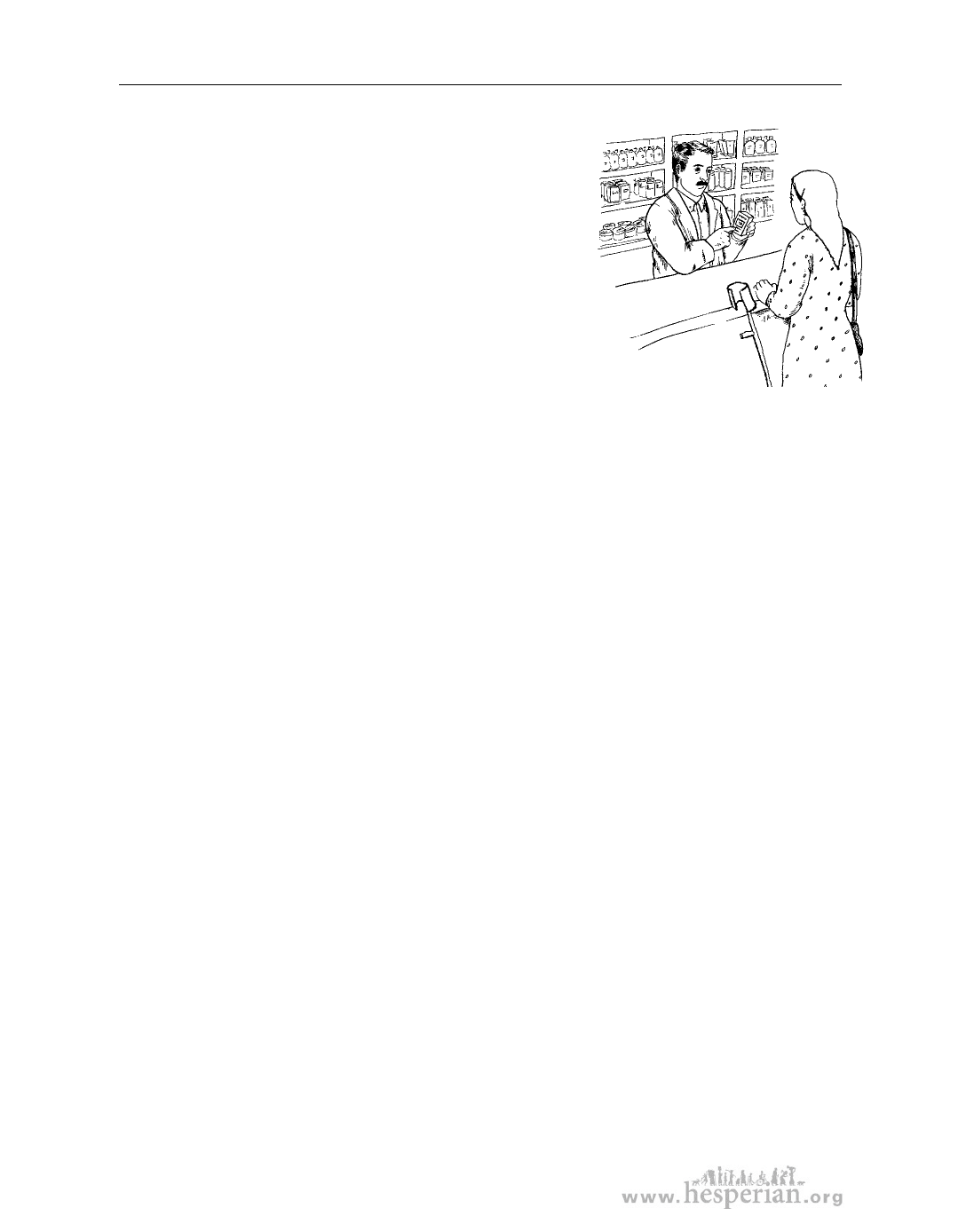
176 chapter 8: Sexual health
Treatment for HIV/AIDS
Neither modern medicine nor traditional healing
systems has found a cure for AIDS. But there are
many things that can be done to help a person with
AIDS. Clean water, good food, clean clothes, a clean
place to rest and sleep, and loving relationships
with friends and family can all help someone with
AIDS stay healthy. The same foods that are good
for someone who is healthy are good to eat when
someone has an AIDS-related sickness (see pages
177 to 178).
Although there is no cure for AIDS, antiretroviral medicines (ARVs) are now being
used successfully to treat people who are sick with AIDS. ARVs help strengthen the
immune system so the person with HIV can fight off infections and stay healthy. But
the HIV is not cured. Small amounts of the virus always remain in the person’s body.
When a person has HIV, he or she can always pass the virus to someone else.
Getting good health care is often not easy for women with disabilities, and for those
who are also infected with HIV/AIDS, it can be even more difficult. Health workers
may not want to test or treat them because they think disabled women cannot have
sex, cannot get infected with HIV/AIDS, or will die quickly if they are infected.
But just as women with disabilities have the same risk of getting infected with
HIV as other women, they will also live longer and healthier lives if they get
treatment.
AntiRetroviral Therapy (ART)
AntiRetroviral Therapy, or ART, means taking a combination of 3 antiretroviral
medicines at least 2 times a day. Once a person with AIDS begins ART, the
medicines must be taken faithfully every day. A woman on ART will gain weight,
and look and feel healthier. But if she stops ART, misses doses of medicine, or takes
them at the wrong times, her HIV can become stronger and make her sick again.
For more information about medicines for treating HIV/AIDS for women with
disabilities, or for preventing the spread of HIV from a mother to her baby, see
pages 358 to 362.
Although ART is costly, it is becoming cheaper and more available in many countries.
Government health facilities and other programs may offer ART at low or no cost.
Even so, in many communities, medicines are not available for most people with
HIV/AIDS. The power of large pharmaceutical companies in rich countries has often
stopped other countries from making their own less expensive medicines. This has
denied millions of women access to the medicines they need to treat HIV/AIDS.
A Health Handbook for Women with Disabilities 2007